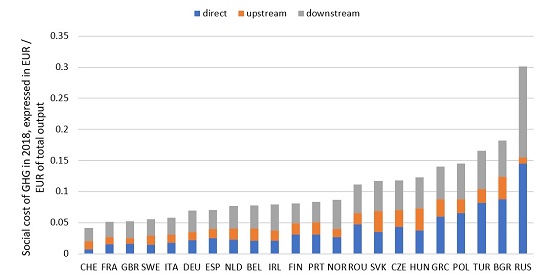Announcements
Drinks

ESG ratings: EU regulation has potential to restore credibility to green investing
By Dierk Brandenburg, Head of ESG and Credit Research
So far, the greenwashing debate has focused on the regulatory and mis-selling aspect of ESG funds, but there are other aspects such as “impact washing” – i.e., companies raising green bonds to refinance existing assets without any incremental impact on climate risk – that are equally damaging to the concept of ESG investing.
Another dimension we might call “competence washing” in that science-based targets are hard to define and monitor by finance professionals that mostly lack a suitable background.
Then there is the need for discipline on the part of companies not to overstate their green credentials which admittedly goes against the instincts of corporate PR in a context where investors are putting increasing emphasis on the environment, social impacts and governance.
Analytical challenges will remain after regulation comes into effect
The EU’s initiative to regulate providers of ESG ratings goes some way to restore confidence into the part of the system that has the most visible impact on capital allocation. However, like with existing credit-rating regulations, the EU can only mandate the correct process and transparency, which does not resolve the analytical challenges posed by ESG assessments, including climate risk.
There are also other fundamental issues to consider, particularly on the question of climate-friendly investing considering how concentrated the emissions problem is.
Only a few industries account for the bulk of global emissions – energy sector, transport and agriculture – where emission reduction really matters, at least at this stage. It is questionable which other parts of the economy can credibly claim their investments make a huge difference to global emissions before the core of the problem has been addressed
Europe’s monetised costs of GHG emissions per euro of total economic output
GHG costs broken down by value-chain component for selected European economies

Note: Scope ESG uses a social cost of carbon equal to EUR 185 per ton of CO2 equivalent. This cost is multiplied with the total of greenhouse gases produced in a country and scaled by the country’s gross economic output (based on revenues rather than value added). Sources: Scope ESG Analysis GmbH, EDGAR database, OECD
Recognition of practical challenges in ESG investing remains essential
Many of the weaknesses in ESG reporting can be attributed to lack of common, agreed standards, but standard setters themselves are caught in the middle of a debate about what is desirable and what can realistically be implemented at a global level.
While the EU Commission has come in for a lot of criticism for dropping mandatory reporting of climate risk metrics by companies, this reflects the realpolitik of balancing the sheer cost and complexity of these proposals. The problem is that materiality differs across industries and stakeholders making it impossible to incorporate all aspects in a single static accounting framework. Materiality assessments will also change over time as companies adapt their business models and investors refocus their efforts on specific aspects such as carbon intensity or biodiversity. Regardless of the proposed framework, investors will push companies to improve their disclosure to maintain access to capital markets.
The debate about the so-called scope-3 emissions – those from a company’s whole value chain, not just its own activities – is a good example, pitching the interests of investors and activists against how much information companies can reliably produce at a reasonable cost.
The same applies to green bond standards that need to make a trade-off between the virtues of a large and liquid market against purist standards on the environment and other issues that might drive away issuers.
Thus, both sides need to become more realistic about how much transparency can be credibly achieved, always bearing in mind that, in the long run, better pricing of carbon dioxide emissions can achieve transparency much better than cumbersome reporting while remembering all bonds from an issuer will trade off the same credit curve.
Top-down modelling can help resolve data shortfalls
Yet, precise data is not the only solution to help curb greenwashing and restore credibility.
Top-down modelling of supply chains and scope-3 emissions as well as stress testing of business models according to agreed climate scenarios, such as the NGFS, can help overcome the credibility issues.
These techniques are less precise than thorough, yet cumbersome, bottom-up accounting of CO2 emissions and other ESG factors, but they do provide investors with the big picture. They can help quantify the impacts on the environment and society of corporate activity and the ESG-related risks facing the companies themselves.
We have, for example, analysed the monetised costs of the global impact of indirect and direct GHG emissions from different European countries to provide a comparable measure of carbon intensity (Figure 1).
Regulations which take these fundamental ESG challenges into account will greatly serve the interests of issuers, investors and the planet.






